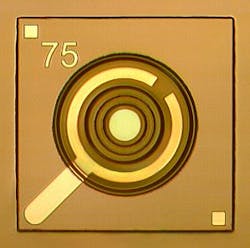Voxtel APDs feature a comounted temperature sensor
Deschutes BSI series backside-illuminated avalanche photodiodes come on ceramic submounts, with a comounted temperature sensor. Typical responsivity is greater than 1.0 A/W at 1550 nm and 0.73 A/W at 1064 nm, with operating gain from 3 to 20. The InGaAs/InAlAs APDs have an equivalent ionization coefficient of keff less than 0.2, with 40% less excess noise than conventional telecom InGaAs/InP APDs.
Voxtel
Beaverton, OR
[email protected]
-----
PRESS RELEASE
FOR IMMEDIATE RELEASE
Voxtel Releases Backside-Illuminated, Low-Excess-Noise NIR APDs
Model VFC-1000 APDs of the Deschutes BSI™ series provide high responsivity and low capacitance
BEAVERTON, Ore. — Voxtel has announced the release of its latest product line, the Deschutes BSI™ series of back-side-illuminated APDs.
The Deschutes BSI™ APDs are available on ceramic submounts, with a co-mounted temperature sensor. Compared to front-side-illuminated APDs, they offer superior responsivity and lower capacitance. Deschutes BSITM APDs offer typical responsivity greater than 1.0 A/W at 1550 nm and 0.73 A/W at 1064 nm, and operating gain from 3 to 20. These InGaAs/InAlAs APDs have been custom-designed for low excess noise, with a design exploiting the non-local behavior of impact ionization. The resulting APDs, which are characterized by an equivalent ionization coefficient of keff < 0.2, have 40% less excess noise than conventional telecom InGaAs/InP APDs, which makes them ideal for optical communications, laser radar (LADAR) and LIDAR, and laser rangefinding/designating applications. Configured for low capacitance, the parts are well suited for high-bandwidth applications. The Deschutes BSITM model series VFC-1000 is available in 30-, 75-, and 200-μm-diameter versions; it is available on submounts, in hermetic packages with optional thermoelectric cooling, and packaged into photoreceivers. All packaged versions are available with optional fiber pigtails.
The product is immediately available for sale.
